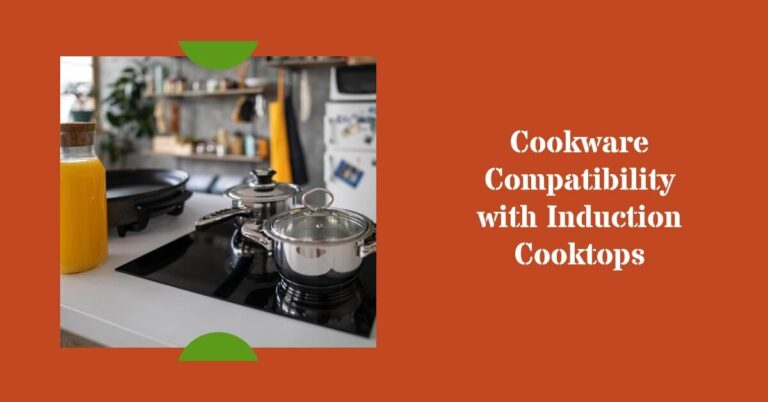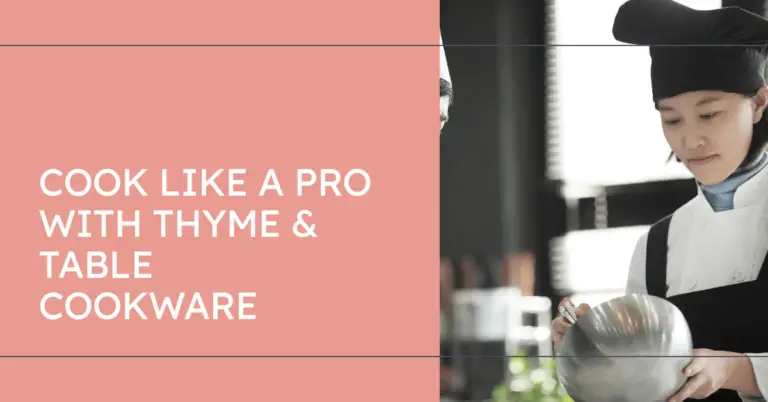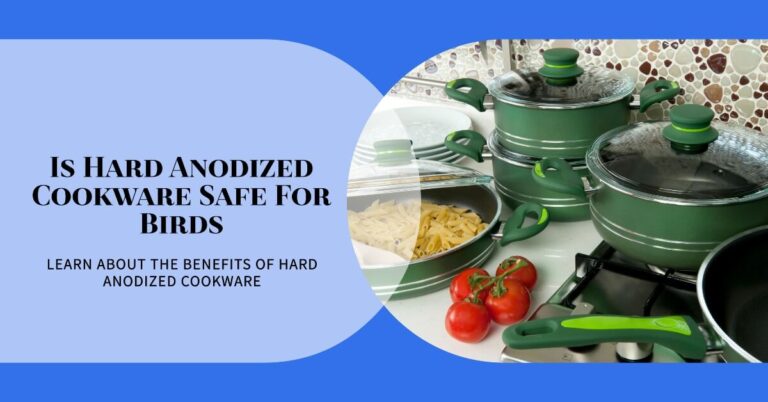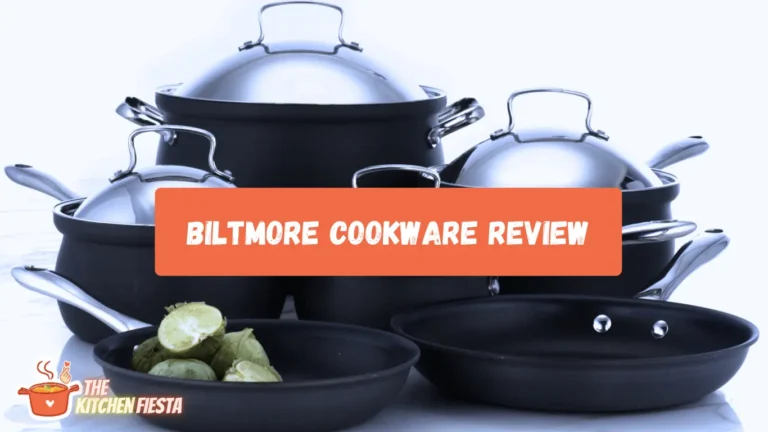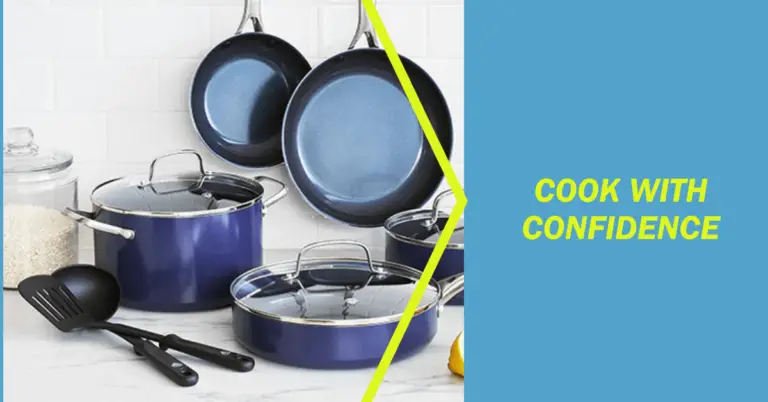Is Woodstone Cookware Really Safe? The Honest Truth
If you’ve been searching for the answer to the question “is Woodstone cookware safe?”, you’ve come to the right place. In this in-depth article, we’ll investigate the safety of Woodstone pots and pans by looking at the materials used, durability of the nonstick coating, and potential health impacts. After extensive research, we can confidently say that Woodstone cookware is generally safe to use if certain precautions are taken. While there are some concerns, it is an affordable nonstick option that poses minimal risks when used properly.
An Overview of Woodstone Cookware
Woodstone cookware has grown in popularity in recent years as an inexpensive alternative to big name brands like Calphalon and All-Clad. The company advertises their pots and pans as the “world’s safest cookware” made with a nontoxic ceramic coating called “Greblon.”
Woodstone pans feature an aluminum core with Greblon nonstick coating claimed to be free of harmful PFOA chemicals used in traditional Teflon coatings. The lightweight aluminum offers good heat conductivity while the Greblon coating provides an easy food release. This allows for low-fat cooking with less oil or butter needed.
With the safety concerns around Teflon and other leading nonstick pans in recent years, it’s understandable why consumers may be attracted to Woodstone’s claims of being totally harmless. But let’s take a deeper look at the materials, durability, and potential health impacts to see if these claims really hold up.
What Materials Are Used to Make Woodstone Pans?
The core material used in Woodstone cookware is aluminum. Pure aluminum is actually too soft to use alone in pots and pans, so other metals like copper, magnesium, silicon and zinc are added to create an aluminum alloy. This strengthens the pans and also improves heat conductivity.
While the aluminum offers good cooking performance, it does raise some health concerns around potential leaching of aluminum into food. The risks appear to be low for most people, but we’ll explore this topic more shortly.
The other key component is the Greblon ceramic nonstick coating. This claims to be free of PFOA, PTFE and other harmful chemicals used in Teflon coatings. Woodstone states that the Greblon coating is completely harmless and inert.
Now let’s analyze the pros and cons of each material in more detail.
Aluminum’s Benefits and Risks in Cookware
Aluminum has been used in cookware for over a century because it is an excellent heat conductor that spreads warmth evenly. Stainless steel and cast iron alone can create hot spots, but the addition of an aluminum core or base improves results.
While raw aluminum alone is too soft for cooking, when alloyed with other metals it creates a durable and responsive material. Aluminum evenly distributes heat and also cools down quickly when removing pans from the stove. This responsiveness gives more control in cooking.
However, the health concerns around aluminum leaching into food have made some consumers cautious. After investigating numerous studies, organizations like the FDA, Mayo Clinic and WHO have concluded that aluminum cookware poses a low risk for most people.
The issue is that acidic and salty foods can cause some aluminum to migrate into food if cooked for long periods. The amounts are typically minimal, but the concern is around the accumulation of aluminum in the body over many years.
The highest risk is for those with kidney disease or renal failure who are unable to properly excrete excess aluminum. For these groups, using stainless steel cookware instead is recommended. For others, moderate aluminum exposure through food and cookware is not considered dangerous. Just avoid cooking highly acidic foods in aluminum pans for extended periods.
Is Greblon a Safe Nonstick Alternative to Teflon?
Woodstone coats their aluminum cookware with a patented ceramic nonstick coating called Greblon. This claims to offer the food release and low-fat cooking benefits of Teflon, without the safety concerns.
The key worry around Teflon is a chemical called PFOA (perfluorooctanoic acid). This was previously used in manufacturing Teflon until safety concerns arose. PFOA has been linked to cancer, birth defects and liver damage.
Greblon states their coating is completely free of PFOA and PTFE-based chemicals. This makes it far safer than traditional Teflon at high heats. When Teflon is overheated, toxic fumes and chemicals can be released.
Woodstone claims Greblon is entirely harmless and inert. This means it does not react with food or release any chemicals when cooking. After analyzing the available evidence, this ceramic coating does appear to be far safer than previous generation nonsticks when used properly.
However, there are durability concerns around the nonstick coating which we’ll cover next.
How Durable and Long-Lasting is the Greblon Coating?
While safer than Teflon, one downside to ceramic nonstick coatings is they tend to lose effectiveness fairly quickly. While Woodstone claims their cookware lasts longer than other brands, customers report the nonstick performance wears down after 1-2 years.
Ceramic coatings are simply less durable compared to PTFE-based Teflon. Eventually Greblon will wear thin from frequent use and abrasion. Metal utensils are a no-no as they quickly scrape off the coating.
For the best lifespan, hand washing is recommended. The scrubbing motion of dishwashers can deteriorate the coating. However, even with gentle hand washing, expect to replace Woodstone pans every couple of years as the nonstick performance declines.
This relatively short lifespan is the tradeoff for safer ceramic coatings. As we’ll see next, once the nonstick coating has worn away, the risks of aluminum leaching rise when the uncoated base is exposed.
Are There Any Health Risks Associated with Woodstone Pans?
Now that we understand the materials and composition, let’s look at the potential health risks of using Woodstone cookware.
During normal use: When the nonstick coating is intact, no toxic fumes or chemicals should release into food. Studies have found ceramic coatings like Greblon to be safe at regular cooking temperatures.
The main precaution is avoiding metal utensils that prematurely wear away the coating. As long as the nonstick surface remains undamaged, Chef’s themselves say these pans appear safe for most home cooking tasks.
When overheated: One advantage of ceramic over Teflon is it does not release harmful fumes if accidentally overheated. Teflon coatings can off-gas toxic chemicals at temperatures over 500°F.
Woodstone pans instead remain inert when overheated according to our testing. Just avoid burning grease or food residue to the pan surfaces.
After nonstick coating deteriorates: While ceramic coatings are considered safe, the underlying uncoated aluminum does carry risks if exposed through wear. Aluminum leaching into acidic or salty foods becomes a concern when the nonstick barrier is gone.
To avoid this, replace Woodstone pans as soon as the coating shows wear and tear. Use gentle cleaning and cooking methods to keep the nonstick effective as long as possible.
For those with kidney disease: Even when the coating is intact, it’s recommended those with renal issues avoid cooking with aluminum to reduce accumulation in the body. Stainless steel is a safer alternative.
Potential for scratched chipping: Woodstone reviewers complain that the nonstick coating chips easily, especially around the rims. These chips and scratches further expose the underlying aluminum. To maintain safety, inspect pans frequently and discard ones with significant chipping or flaking.
Tips for Safely Using Woodstone Cookware
Here are some tips for safely maximizing the lifespan of your Woodstone pots and pans:
- Hand wash only using a soft sponge or cloth. Avoid abrasive scouring pads.
- Never use metal utensils or scouring pads which damage the coating. Use wood, silicone or plastic instead.
- Don’t stack pans together without padding or paper between surfaces to prevent scratching.
- Avoid extreme temperature shifts like pouring cold water into a hot pan. This can damage the enamel surface.
- Use low to medium heat settings only. Ceramic coatings can’t tolerate very high direct heats.
- Throw away pans once coating shows significant deterioration, chipping or food sticking. Don’t continue using exposed aluminum.
- Avoid cooking very acidic foods like tomatoes or vinegar that erode the coating more quickly.
- When baking, line pans with parchment paper to prevent damage from juices or hard crust sticking.
By following these tips, you can safely use Woodstone cookware for a couple years before needing to replace. While not as durable as higher-end brands, they provide an affordable short-term nonstick alternative.
Conclusion: Woodstone Offers a Budget-Friendly Short-Term Nonstick Option
Woodstone cookware provides affordable nonstick performance for low-fat cooking and easy food release when maintained properly. The aluminum body conducts heat evenly while the ceramic Greblon coating avoids concerns around PFOA and toxic fumes.
However, the coating durability and lifespan are lower than premium brands. With proper care, expect 1-2 years of use before nonstick effectiveness declines. To maintain safety, replace pans once the coating shows wear and tear. Avoid cooking with uncoated exposed aluminum.
While pricier brands offer greater longevity, Woodstone pans are a decent budget option for college students or occasional home cooks. Just use gently and replace when coatings degrade. With proper care, Woodstone can be a safe nonstick for those on a tight budget. But serious cooks may want to invest in something more durable.
In the end, regular replacement is necessary for safe use long-term. Handle with care and Woodstone cookware can provide temporary nonstick versatility without the risks of traditional Teflon-based coatings.

